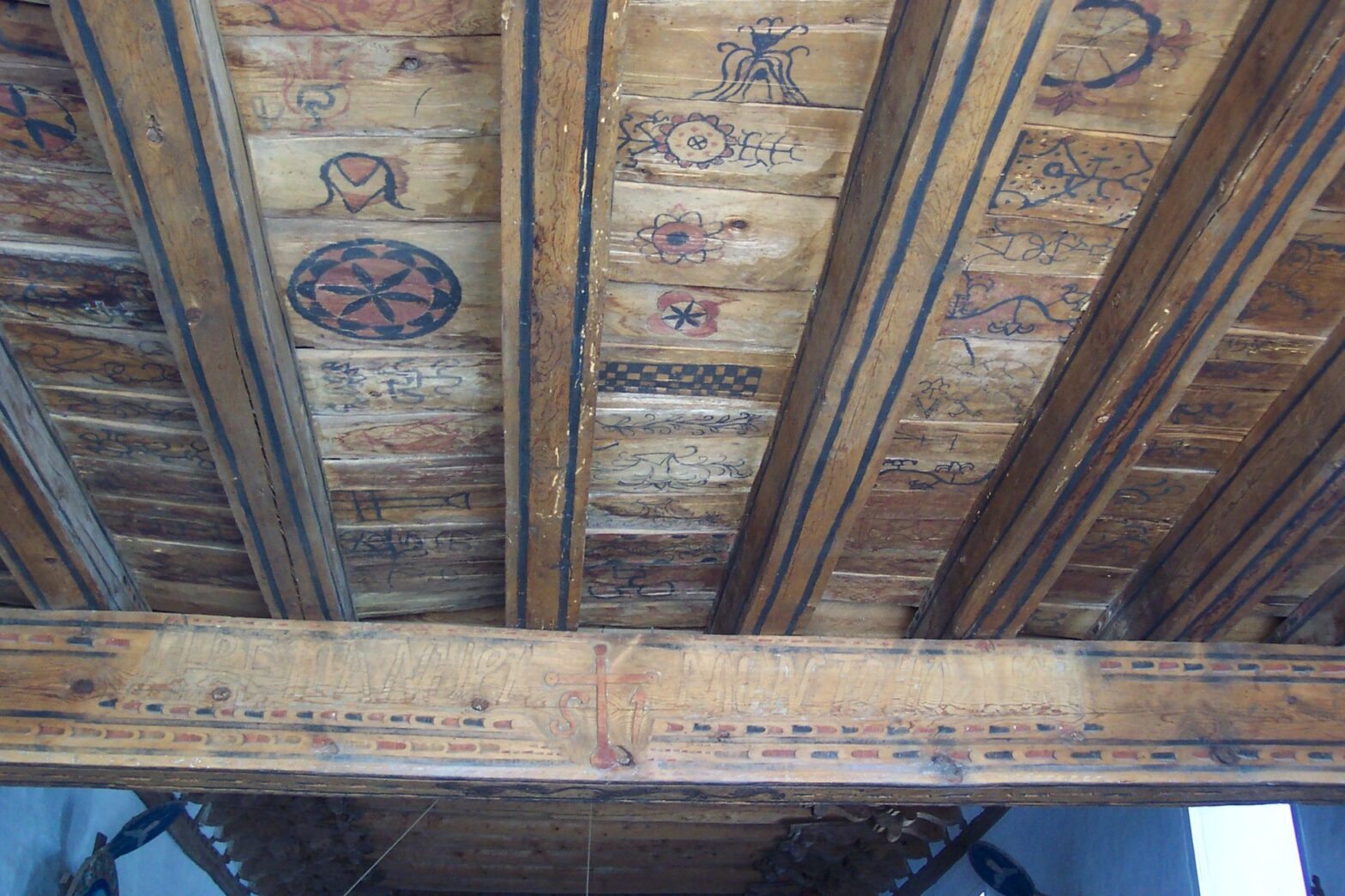By Mariah Baca
A small mountain community built on commitment and dedication shares a symbol that ties the past and present: the San Jose de Gracia Church in Las Trampas. Inside this 263-year-old building, colorful Spanish colonial art hangs on the plastered adobe walls while wooden beams still bear designs painted hundreds of years ago.
My grandfather, Leroy Aguilar, was the long-time caretaker of the church and my family has ties dating back generations. On a recent visit to the church I found new appreciation for it.
The interior of the church reflects the “height of colonial craftsmanship,” according to New Mexico Magazine.
It takes a lot of work to keep a church going in a small community, especially when it’s built of adobe, which is both sturdy and vulnerable to neglect.
Church caretaker Emilio Martinez says the church’s remarkable preservation is due to the dedication and commitment of the Las Trampas community.
A National Park Service guide calls the church and its art “a picture of cultural continuity.”
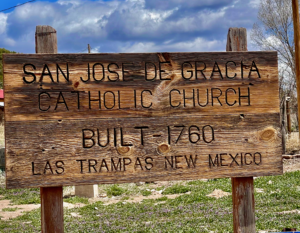
The church’s Spanish colonial art includes santos (wooden representations of saints), bultos (three-dimensional images of saints carved in wood) and retablos (devotional altar paintings images of saints).
The works remain vibrant in color, something that seems like a small miracle, but Martinez explains the much simpler reason.
Volunteers with the Nuvevo Mexico Profundo, a program that raises funds for historic church maintenance and restoration, recently finished a month’s work of conserving the historic works.
While they were cleaning the church, the volunteers made a few discoveries. Gentle scrubbing revealed that the original statue of the Virgin Mary had been painted over with brown paint at some point in time.
Now Mary has been returned to the original colors, a mix of blue, black, red, yellow, green and white.
Another discovery of conservation effort was that the statue of Saint Joseph was missing a hand, so it was unable to hold baby Jesus. Now the statue has been restored and St. Joseph holds baby Jesus.
A visitor to the church may learn some interesting facts, especially if Martinez is around to share them.
Parishoners and priests are buried under the building’s rough floorboards.
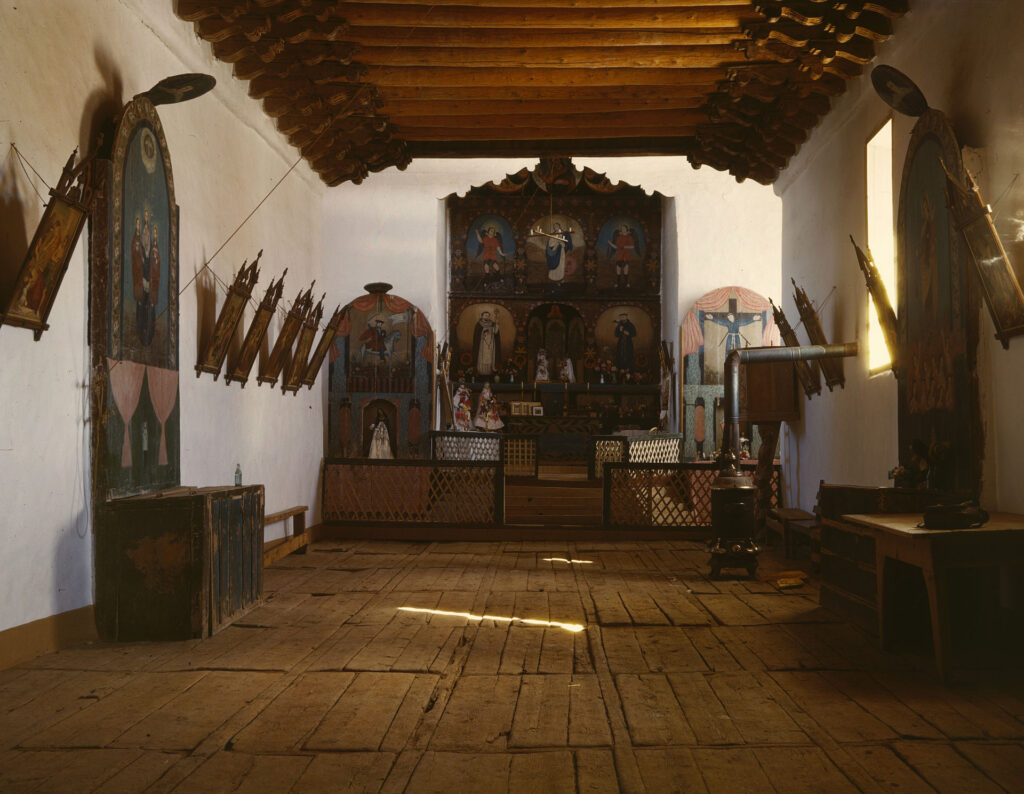
But don’t forget to look up, too. The wooden ceiling still shows drawings that done by the children in the 18th Century.
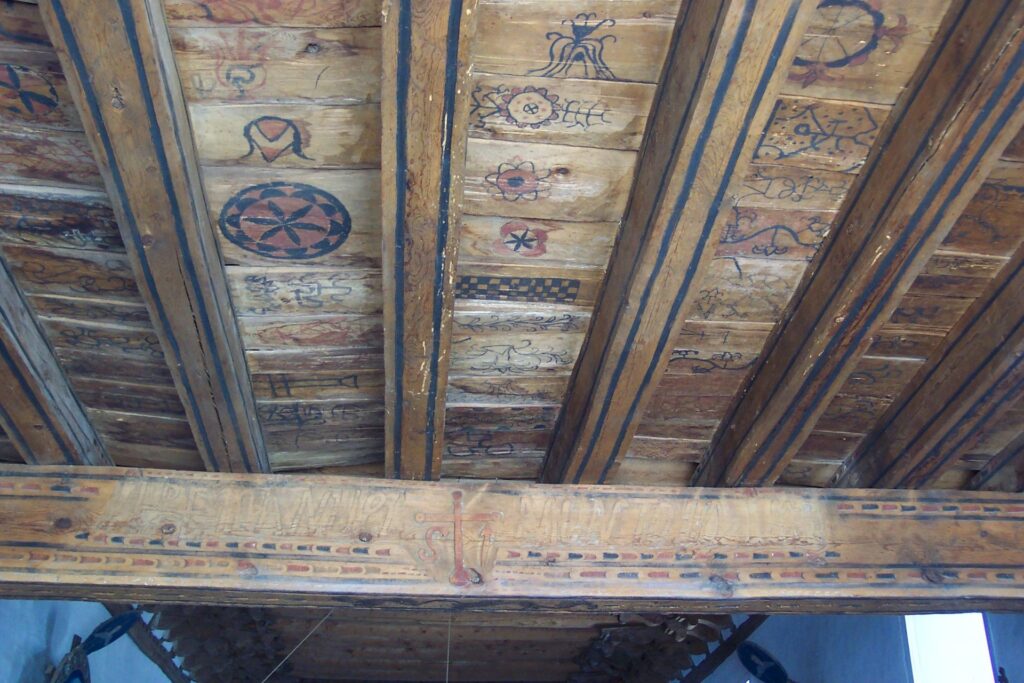
According to Martinez, when the community of Las Trampas was building the church, families would keep children entertained and safe by giving them pieces of wood to doodle on. At the time materials were scarce, so the wood used by the children to doodle wasn’t just tossed out, it was used in the church.
On a recent visit a couple from Spain stopped to see the church and appreciated its historic significance. “Right when you walk into the church, you can recognize the Spanish influence right away,” one said.
The village of Las Trampas was established in 1751 by 12 Spanish families who were led by Juan de Arguello, a former soldier of the presidio in Santa Fe. They were granted 46,000 acres of land from provincial governor Tomás Vélez Cachupín to settle and build a community.
The early colonists were very religious but the nearest church was 10 miles away in Picuris. In 1760 Las Trampas was given permission to build its own church. The townspeople started construction right away and finished in 1776.
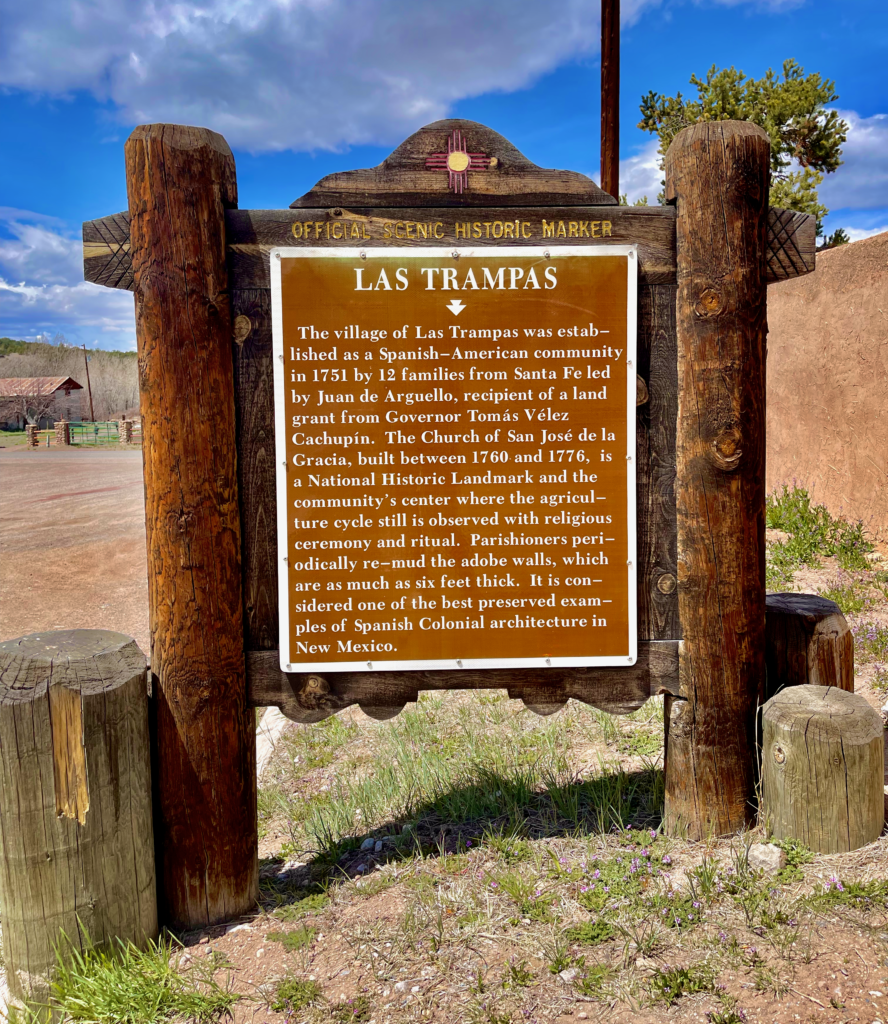
“The church is a symbol of unity for us,” Martinez said. “It’s where the community comes together and does things in unity. It’s an important cultural lesson. Without unity, you can’t get anything done.”
Every year citizens in the community volunteer to replaster the 6-foot-thick adobe walls.
This fulfills a promise villagers made ages ago to the bishop of Picuris, Martinez said. The people of Las Trampas committed not only to building but maintaining the church for generations to come.
“The church is the most important thing in our community,” said resident Gwendolyn Naranjo. “Every Sunday while I was growing up mass would be held there and the whole community would get together to read scripture.”
The church isn’t as busy as it used to be and it isn’t open as often as it had been.
But if you were to take a road trip there this summer, you might get lucky and be able to go inside to see the beautiful art.
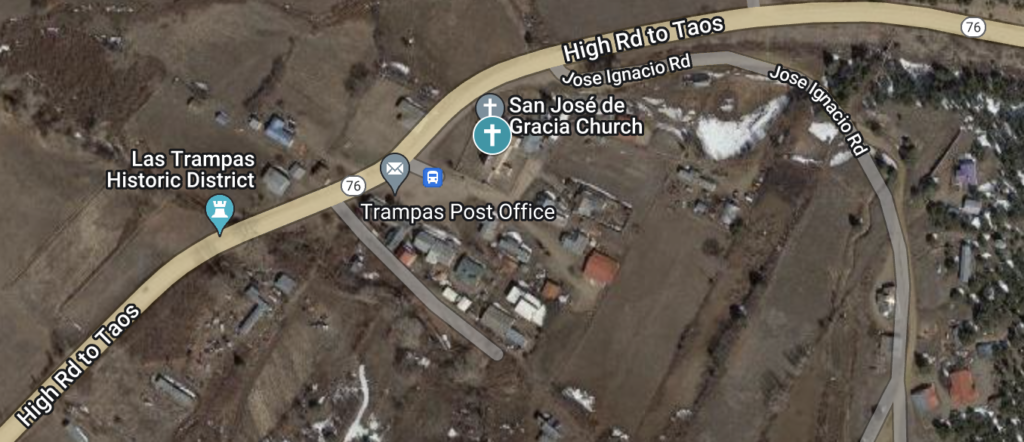
Location: 2377-2381 NM-76
